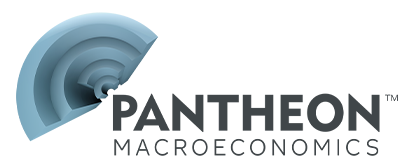Pantheon Publications
Below is a list of our Publications for the last 5 months. If you are looking for reports older than 6 months please email info@pantheonmacro.com, or contact your account rep.
Please use the filters on the right to search for a specific date or topic.
- In one line: Headline is going nowhere for the rest of this year.
- In one line: Headline is going nowhere for the rest of this year.
- Markets now see an even chance of a December rate cut, after a volley of hawkish Fed speeches...
- ...But no one has changed their view from September, and the official data will support the doves.
- Tinkering with tariffs on food would have only a very small impact on overall inflation.
- Inflation in Brazil fell markedly in October, driven by a stronger BRL and softer domestic demand.
- Services are the main growth anchor, while retail sales have weakened due to tight credit and uncertainty.
- The hawkish hold from the COPOM prepares markets for gradual 2026 rate cuts amid ongoing risks.
- China has been steadily strengthening its position in global maritime and logistics networks.
- It stands to benefit from an operational Northeast Passage, reinforcing its ambitions in global logistics.
- China plans to strengthen its aviation industry, making its own aircraft and expanding its airline market share.
- EZ industrial production had a neutral impact on EZ GDP in Q3, if you believe Eurostat’s figures.
- Construction, meanwhile, is set to have been a drag, while services pulled GDP up by 0.2%.
- Surveys point to a jump in services output ahead, but meagre moves in construction and industry.
- Q3 growth undershooting the MPC’s forecast all but seals a December rate cut…
- …But GDP will likely rebound strongly in October and November as erratic industrial drags unwind.
- Growth is far from spectacular, but it seems to be trended only a little below the UK’s potential.
In one line: Reversing August’s fall; Q4 will be better.
In one line: Sticky, and will remain so until January.
- US - Tariffs unlikely to drive a big “re-shoring” of US manufacturing
- EUROZONE - Swiss GDP fell in Q3 and the economy is now likely in recession
- UK - Only 15 sleeps to go until the Budget, but firms brush off worries
- CHINA+ - China’s export growth more resilient than the headline figures suggest
- EM ASIA - Philippines’ ugly Q3 GDP long in the making; ICI will make things worse
- LATAM - Banxico cautious as core inflation stickiness curbs easing prospects
Pointing to a sharp slowdown in wage growth.
In one line: A minor dip; investor sentiment still signals a solid PMI.
- The October CPI probably will never be released, but indicators point to a mere 0.2% rise in the core.
- Pass-through from tariffs to goods prices appears to have slowed; vehicle prices still largely unaffected.
- Residual seasonality, lower health insurers’ margins and fading rent rises imply slower services inflation.
- Brazil — Rally extends as confidence builds
- Argentina — Soars on election relief, but risks ahead
- Colombia — Outlook still bright but cautious
- CPI inflation in India fell to an historic low in October, at 0.3%, as food deflation deepened…
- …Our daily food-price tracker compels us to lower our 2025 and 2026 forecasts to 2.1% and 3.3%.
- The mean-reversion up in core inflation vanishes completely if we strip out the lift from gold prices.
- ECB doves hoping for help from the euro to pull a December cut over the line will be disappointed…
- ...We expect a further softening in the euro to 1.15 by year-end, before a slight pick-up next year, to 1.17.
- Spanish and Italian surveys for early Q4 are too upbeat, in our view.
- We expect CPI inflation to decline to 3.5% in September, but only just on the rounding.
- Utility-price and airfares base effects cut inflation, but we face unusually large two-sided risks this month.
- Quarterly public rent resets, foreign-student tuition-fee hikes and food prices could surprise our forecast.
- In one line: Fiscal worries begin to weigh on consumer spending.
Decent, if unspectacular, close to Q3 for Indonesian retail sales
Sales days and festivals boost Malaysian retail
- Continuing claims are rising only gradually, but understate the recent increase in labor market slack.
- Federal staff who took deferred resignation offers are ineligible to claim; new graduates can’t claim either.
- Capex intentions have improved lately, but remain consistent with weak underlying investment.
